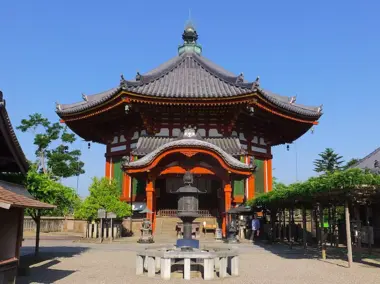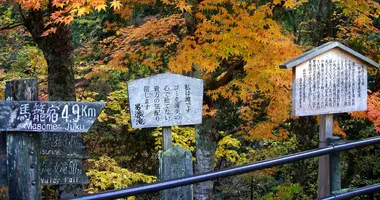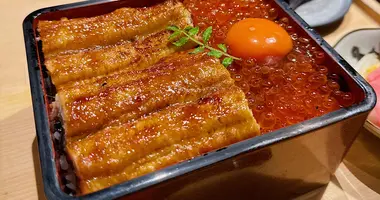Kofukuji temple: a historical and cultural gem in Nara, Japan
- Published on : 29/03/2024
- by : Japan Experience
- Youtube
With a history spanning over 1,300 years, Nara's Kofukuji temple is one of the oldest and most influential Buddhist temples in Japan. Closely tied to the powerful Fujiwara clan, it was once a sprawling complex of over 150 buildings. Today, Kofukuji remains an important temple of the Hosso school and a major tourist attraction as a UNESCO World Heritage Site. Visitors are drawn to its spectacular five-storied pagoda, a symbol of Nara, and the temple's impressive collection of Buddhist art housed in its museum.
The origins and early history of Kofukuji temple
Kofukuji's story begins in 669, when Kagami no Ōkimi founded a Buddhist chapel to pray for her husband Fujiwara no Kamatari's recovery from illness. The temple was then moved and renamed twice: first to Umayasaka in 672 following the Jinshin Rebellion, and then to its current site in 710 with the establishment of the Heijō capital (present-day Nara). Under the patronage of Kamatari's influential son Fujiwara no Fuhito, it was renamed Kohfukuji, meaning "Temple that Generates Blessings", in reference to the Vimalakīrti Sutra.
The rise of Kofukuji as a major Buddhist center during the Nara and Heian periods
During the Heian Period (794-1185), Kofukuji flourished as the Fujiwara clan's power grew. It became a leading center of the Hossō school of Buddhism, introduced from China in 735. The temple complex expanded rapidly, merging with nearby Kasuga Shrine. Kofukuji gained significant political clout, even maintaining its own army of warrior monks. At the height of Fujiwara influence, the temple consisted of over 150 buildings.
The decline and destruction of Kofukuji in later centuries
As rival clans like the Taira and Minamoto rose to power, Kofukuji suffered. In 1181, a Taira army attacked and greatly destroyed the temple complex. Rebuilding began, but the temple endured further damage from civil wars and fires over the following centuries. Many important structures, including two of the three golden halls, were never reconstructed. The temple's political and religious influence waned, especially after the capital moved to Kyoto. In the Meiji Period (1868-1912), anti-Buddhist policies dealt another blow, forcing Kofukuji's temporary abandonment.
Kofukuji's main buildings and architectural treasures
Despite its turbulent history, Kofukuji still boasts several architectural marvels:
- The five-storied pagoda, a symbol of Nara, stands 50 meters tall as Japan's second tallest wooden pagoda after Toji Temple in Kyoto. Originally built in 730, the current structure dates to 1426.
- The Eastern Golden Hall (Tokondo) and the recently reconstructed Central Golden Hall (Chukondo) house important Buddhist statues.
- The Northern Octagonal Hall (Hokuendo) from 1210 and Southern Octagonal Hall (Nanendo) from 1741 contain more treasures, though they are not usually open to the public.
The temple's art collection and National Treasure Museum
Kofukuji is renowned for its priceless collection of Buddhist art, much of which is displayed in the on-site National Treasure Museum. Standout pieces include a rare hollow dry lacquer statue of Ashura and the bronze head of Yakushi Nyorai, the Medicine Buddha. The museum also houses artifacts, books, paintings, and other objects that tell the long history of Kofukuji and its role in Japanese Buddhism.
Visiting Kofukuji: access, hours, and fees
Kofukuji is located in central Nara, a short walk from Kintetsu Nara Station or about 20 minutes from JR Nara Station. Entry to the temple grounds is free, but there are fees to enter the National Treasure Museum (600 yen), Eastern Golden Hall (300 yen), and Central Golden Hall (500 yen). A combined ticket for the museum and Eastern Golden Hall is available for 800 yen. The grounds are open 24 hours, while the halls and museum are open from 9:00-17:00. For inquiries, call +81 (0)742 22 5370 or visit the temple's official website at https://www.kohfukuji.com/english/.
The spiritual and cultural significance of Kofukuji temple
As one of Japan's oldest and most influential Buddhist temples, Kofukuji holds immense spiritual and cultural significance. Its history is deeply intertwined with the rise and fall of the powerful Fujiwara clan and the development of Buddhism in Japan. Today, it remains an active Hosso school temple and a testament to the enduring legacy of Japanese Buddhism. For visitors, exploring Kofukuji offers a profound glimpse into the nation's rich religious heritage, architectural prowess, and artistic achievements. A visit to this ancient temple complex is an unforgettable experience that connects one to over 1,300 years of Japanese history and culture.
Address, timetable & access
Kofukuji Temple
Address
48 Noborioji-cho
630-8213
Japan
Phone
+81 (0)742 22 5370Timetable
9 am-5 pm. Though the grounds are open around the clockPrice
600 yen for adults to the National Treasure Museum; 300 yen for the Eastern Golden Hall (800 yen combined ticket).Access
Take a yellow Nara City Loop Line Bus #2 from JR Nara Station or Kintetsu Nara Station. Get off at Kencho-mae. Buses #70, #72, #97, #160, #50, #51, #53, #82 and #92 all stop at Kencho-mae.Website
https://www.kohfukuji.com/english/
















